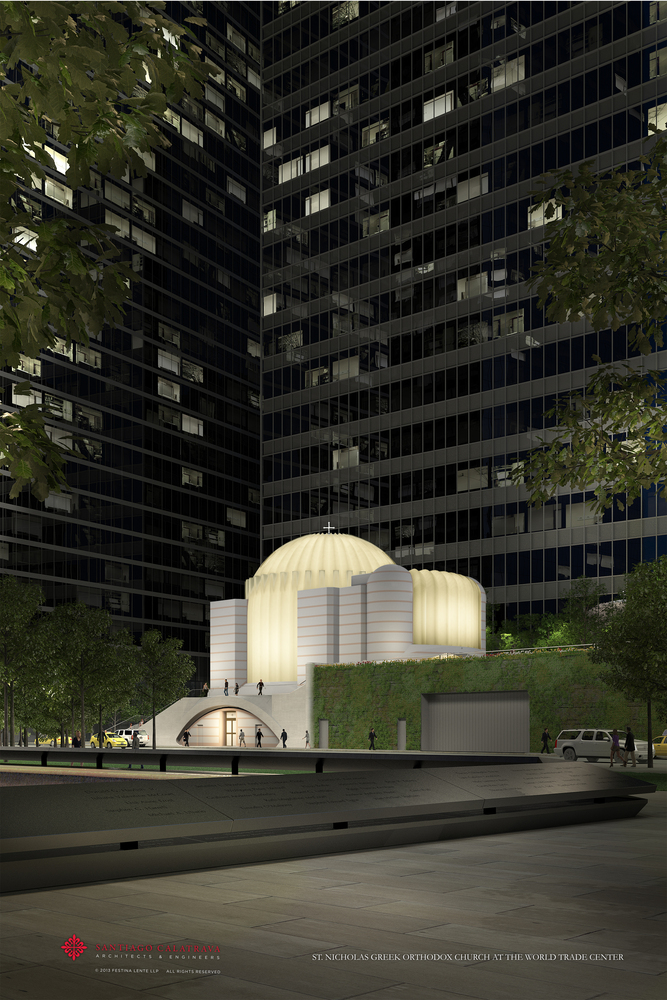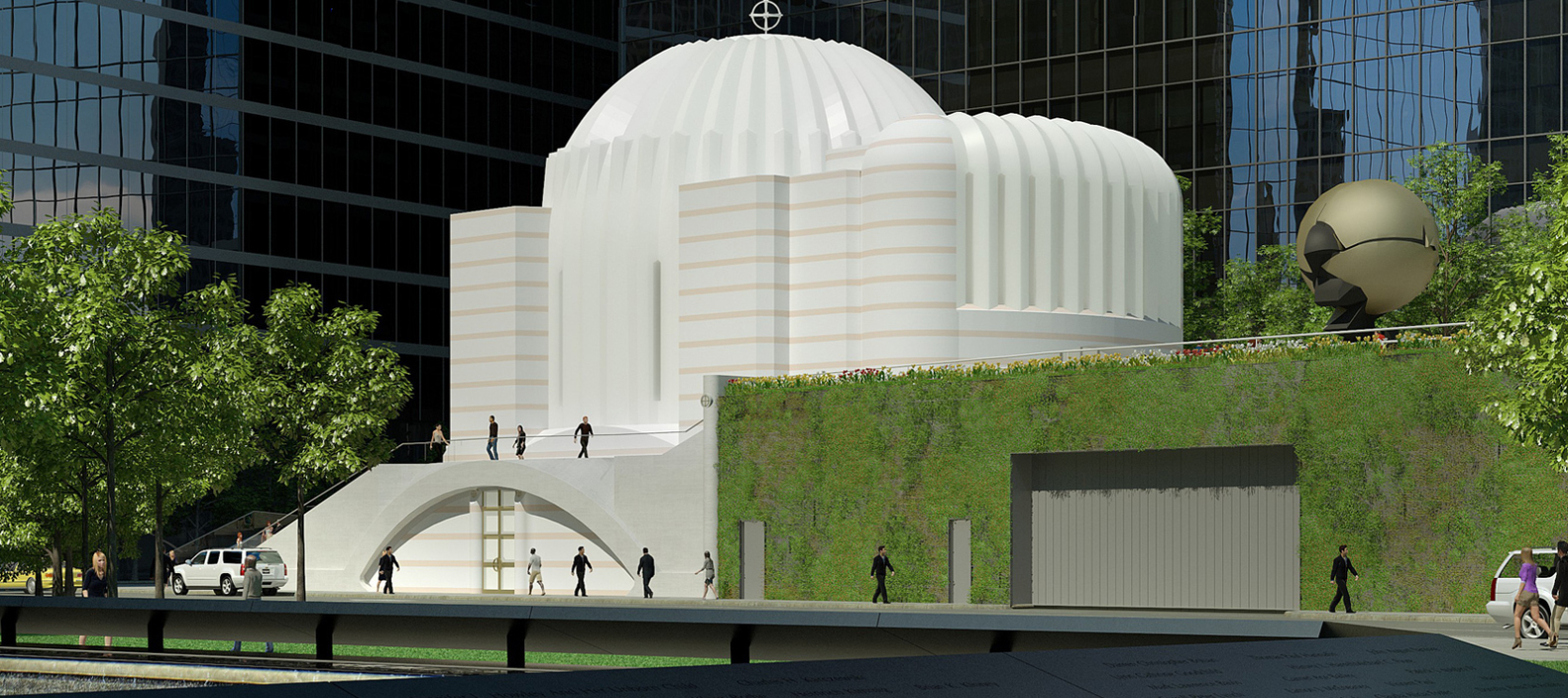World-known architect and engineer Santiago Calatrava is about to complete rebuilding the St. Nicholas Greek Orthodox Church and National Shrine in New York City. The church was struck and destroyed during the 9/11 attacks, and reconstruction did not start until 2015, and it is finally near completion in 2022.
Santiago Calatrava inspired the church’s new structure design from a mosaic of Hagia Sophia in Istanbul—the grand mosque, that was once a church, was a fundamental element that laid the architectural base for the original structure of the St. Nicholas Greek Orthodox Church.
Spanish architect says the architecture of the church was developed from “the idea of a metamorphosis of the images of the Virgin as the Throne of Wisdom “Sedes Sapientiae” and turning it into a temple of the Church”. Using the analog of Byzantine churches’ plans designed to resemble the shape of the cross and the order and proportions of the human body, Santiago Calatrava explains how anthropomorphism was introduced into architecture through Christianity.
Every detail was accurately studied and curated. The number of ribs in the St. Nicholas Greek Orthodox Church is derived from the number of ribs in Hagia Sophia’s dome—a result of an in-depth study of the relationship between Byzantine architecture and numbers.
Implying more symbolism, the facade is made of Pentelic stone with translucent cutouts that make the church release dim lights during the night. This material is inspired by the Parthenon, as Calatrava believes that Hagia Sophia is the Parthenon of Orthodoxy.
“Architecture, beyond being linked to human uses from a practical point of view, can have an intrinsic symbolic value, which is not written or expressed in a specific way but in an abstract and synthetic manner, sending a symbolic message, which will reach posterity. It is in this way that the message of works such as Hagia Sophia has reached our days.” Santiago Calatrava
Although reconstruction of the destroyed church started at the end of 2014, works were held off for four years because of funding issues. After the completion of the church’s 50-foot dome in 2016, costs exceeded the planned budget, causing the Greek Orthodox Archdiocese of America to run out of funding. In 2020, reconstruction resumed after a new nonprofit organization titled the Friends of St. Nicholas provided financial support.
Santiago Calatrava has recently revealed the designs of two futuristic pavilions at Expo 2020 in Dubai, UAE. The form of the UAE pavilion resembles a “symbolic interpretation of the flow of movement”—it blends with its context of greenery, shaded arcades, and cantilevered wings and, at the same time, speaks of the development and innovation of the UAE. On the other hand, Qatar’s pavilion design combines elements of sculpture and structure resulting in an architectural beacon representative of Qatar’s vision of the future while paying tribute to the nation’s rich cultural heritage.




